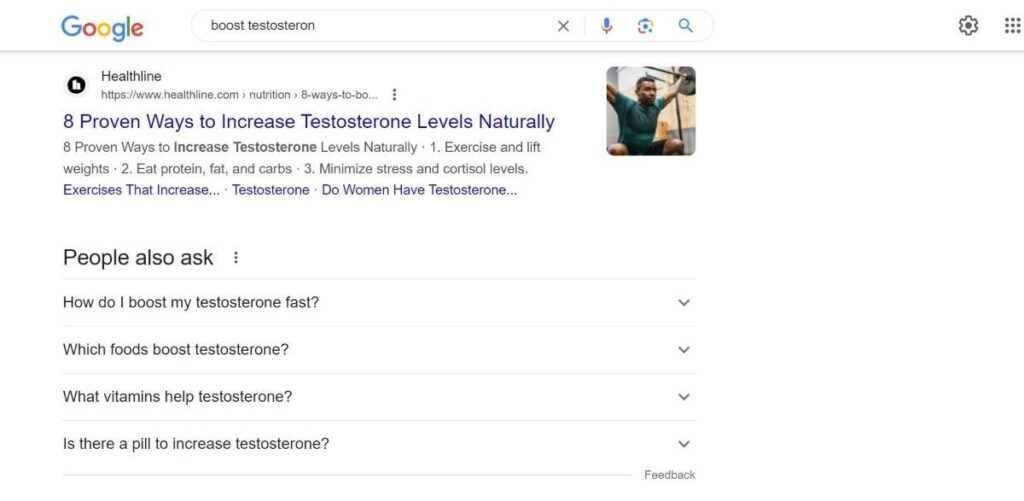Semantic SEO: 6 Best Tips Do it by 2024
Semantic SEO is one of the most recent and exciting innovations that is transforming how we optimize our digital content.
Writing high-quality content can be overwhelming in our modern yet crowded digital world. But several methods like semantic SEO method can help create query-optimized articles which search engines love!
But what exactly is Semantic SEO? Why is it important, and how can you use it to optimize your site content? Hold on tight as we dive into the best Semantic SEO strategies you can implement while writing your content!
What Exactly Is Semantic SEO?

Semantic SEO is Building additional meaning and thematic depth into online content to make it as rich as possible.
You also assist Google crawlers in seeing your content as high-quality so that it can get chances to be well-ranked.
Why should I include semantic SEO in my articles?
Including semantic SEO in your article can really boost your content ranking in SERPs for the following reasons:
What is the distinction between Semantic SEO and keyword stuffing?
Semantic SEO and keyword stuffing are distinct content-writing methods. The first is a pure reader-oriented writing method. So it’s an effective blogging technique. And the second is a pure SEO method. We recap the main differences in the table below:
| Aspect | Semantic SEO | Keyword Stuffing |
| Focus | Emphasizes context, intent, and relevance | Involves excessive use of specific keywords |
| Keyword Usage | Uses keywords naturally within content | Overuses keywords unnaturally |
| User Experience | Prioritizes quality, informative content | Degrades user experience with repetitive content |
| Search Engine Impact | Improves search rankings and user engagement | This can lead to penalties and lower rankings |
| Long-Term Strategy | Future-proofs content by considering broader topics and user intent | Short-term strategy with potential for SEO issues |
| User Intent | Aligns with what users are genuinely searching for | Tends to disregard user intent for the sake of keywords |
| SEO Sustainability | Adaptable to evolving search algorithms | Vulnerable to algorithm updates and changes |
6 Ways to Improve Rankings Using Semantic SEO
Semantic SEO adopts several methods that you can use. They are all aimed towards increasing the subject depth and communicating the meaning of web content more effectively.
1. Create a comprehensive outline For Semantic SEO

To create a semantic SEO for your article. The first step you need to do is to create a comprehensive outline.
The content you want to create must be constructed around the subjects of the main topic. So, a well-constructed outline should be covering the issue thoroughly.
To do so, make sure that the headings (H2) and the subheadings (H3) are written separately. But if your content is extensive, then you need to add H4 to cover all the topic’s aspects.
When researching your content, consider each primary content section (each H2 header) to be its own article.
So, if your article’s subject is “increase Testosterone,” your primary parts may be “Testosterone supplements” “Natural Testosterone Boosters”, “fix low Testosterone” and so on.
Investigate each of those issues as though it were its own article. When you follow this method, you ensure that your piece of content has topical authority and is more authoritative than other pieces on the same subject.
2. Write Keyword Clustering

Before writing the content script, try to create a mind map containing all the synonyms closely related to the main topic.
Why?
Google does not rely just on a single phrase on a keyword per page. Your online content team should optimize website pages for several keywords in the same semantic cluster.
Keyword clusters are groups of connected terms with comparable semantic significance. By optimizing these keywords, you may improve the amount of terms listed in Google search results that occur in your website’s content and give it more meaning.
As a result, the content will get more organic clicks on search results.
3. Write Frequently Asked Questions

Frequently Asked Questions often include valuable long-tail keywords and content that Google and other search engines love since they answer the most frequently asked queries by your target audience. It’s the ideal place to answer what readers may ask (People Also Ask) about your service or product, promote yourself as an expert in the subject, and increase your SEO approach.
By answering these questions in your online content, you may boost your semantic signals and raise the likelihood that your content will show high in SERPs. Even if a web page is on page 2 of the search results, it might still appear in PAA (People Also Ask) inquiries.
4. Answer Every Question

It’s critical to develop content with readers in mind rather than simply the exact match keyword you’ve focused on. Try to know the semantic keyword’s meaning.
Once you’ve determined the answer, make sure to anticipate what the user could ask after obtaining the answer to his original query. Continue asking questions and receiving replies until the topic has been addressed. Try Google if you have any relevant questions concerning the keyword. Additionally, you may utilize several search engines, relevant boxes, and auto-suggest.
5. Include Similar Synonyms and Equivalent Phrases
SEO professionals feel that employing synonyms and synonymous words is always safe. Furthermore, employing synonyms and synonymous phrases increases content optimization. It has a great impact on the readership and search engine results.
When creating content for a post or a website, it is critical to avoid overusing words. It will weary the reader and negatively impact your page. Using synonyms and synonymous phrases instead of repeating words is a good technique to avoid repeats.
Also, using long-tail keywords rather than short-tail ones is a great option, especially if one has limited time; otherwise, one may use both short-tail and long-tail keywords. Experts also claim that writing is safer because there is no longer a need to stuff their content with keywords in order to rank high on Google.
Because of semantic analysis, Google can detect synonyms and similar phrases.
Page titles, meta descriptions, h1-h6s, and picture alt text have little effect on rankings, but they can boost semantic signals and topical depth while making the content more legible and nuanced for searchers.
6. Writing deep content with the required length

A basic semantic SEO method is to lengthen the website/blog content to provide a more in-depth description of your issue or topic.
While content length is not an official ranking criterion, lengthier content is more likely to reveal stronger semantic signals.
According to several research, there is a considerable association between longer content levels and higher-ranking cases.
However, just using keyword stuffing and repetition to increase content length will not work.
Instead, lengthen your content to be more particular and nuanced in the information you present on your main topic.
Bottom line
Writing content for Semantic SEO does not have to be difficult. Remember that Google promotes natural language as a valuable resource.
All of these methods, assist you in including more key elements to your content in order to boost the semantic meaning and ranking of your website.
However, you should take everything with a grain of salt and avoid stuffing every single keyword and question you come across along the process.
Keep in mind that the idea is to have content that flows organically and delivers value to consumers and readers.
This fine line between too much and too little information inside your content is frequently what you will struggle with once you have mastered it.







